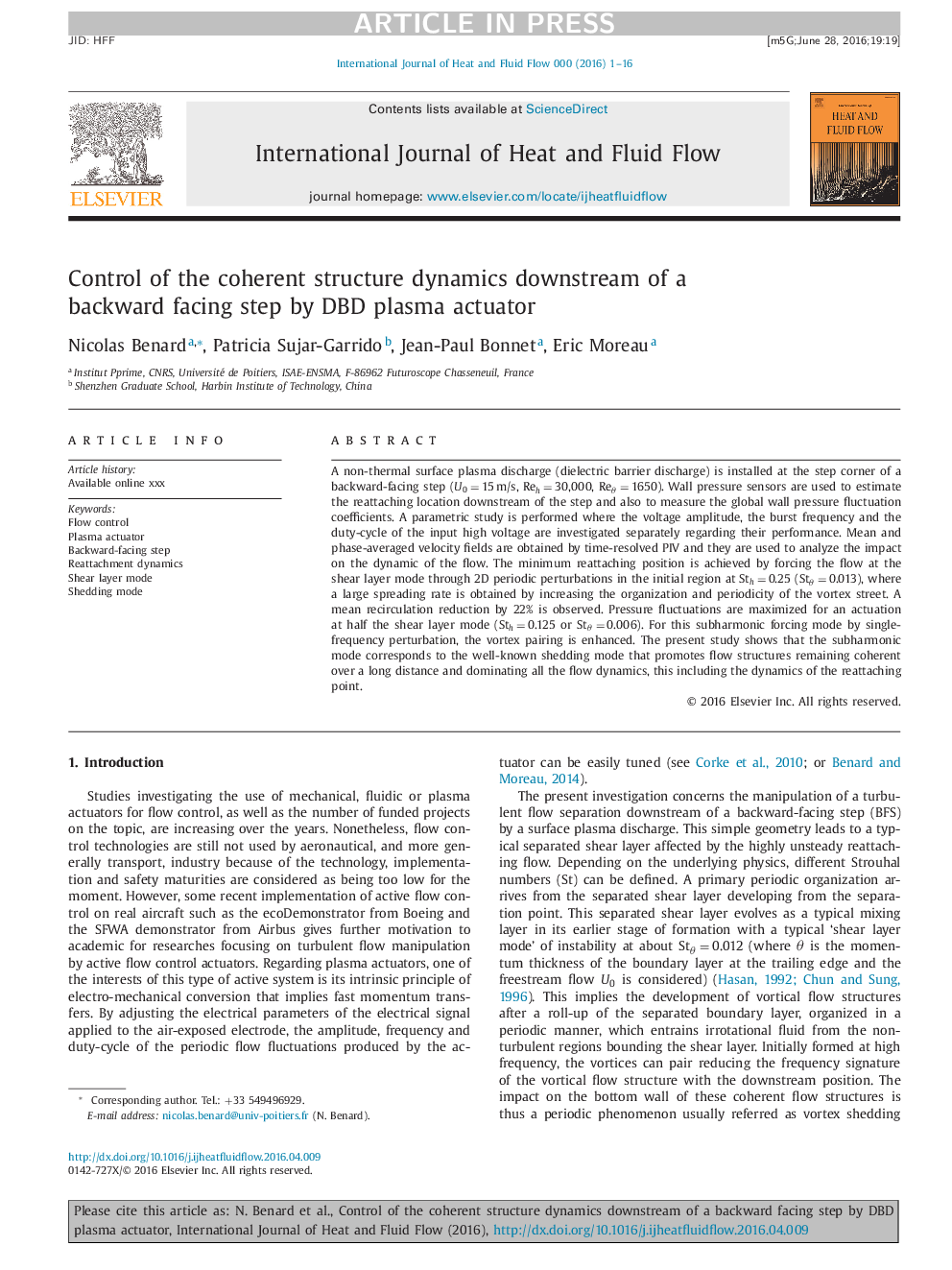| Article ID | Journal | Published Year | Pages | File Type |
|---|---|---|---|---|
| 4993280 | International Journal of Heat and Fluid Flow | 2016 | 16 Pages |
Abstract
A non-thermal surface plasma discharge (dielectric barrier discharge) is installed at the step corner of a backward-facing step (U0 = 15 m/s, Reh = 30,000, Reθ = 1650). Wall pressure sensors are used to estimate the reattaching location downstream of the step and also to measure the global wall pressure fluctuation coefficients. A parametric study is performed where the voltage amplitude, the burst frequency and the duty-cycle of the input high voltage are investigated separately regarding their performance. Mean and phase-averaged velocity fields are obtained by time-resolved PIV and they are used to analyze the impact on the dynamic of the flow. The minimum reattaching position is achieved by forcing the flow at the shear layer mode through 2D periodic perturbations in the initial region at Sth = 0.25 (Stθ = 0.013), where a large spreading rate is obtained by increasing the organization and periodicity of the vortex street. A mean recirculation reduction by 22% is observed. Pressure fluctuations are maximized for an actuation at half the shear layer mode (Sth = 0.125 or Stθ = 0.006). For this subharmonic forcing mode by single-frequency perturbation, the vortex pairing is enhanced. The present study shows that the subharmonic mode corresponds to the well-known shedding mode that promotes flow structures remaining coherent over a long distance and dominating all the flow dynamics, this including the dynamics of the reattaching point.
Related Topics
Physical Sciences and Engineering
Chemical Engineering
Fluid Flow and Transfer Processes
Authors
Nicolas Benard, Patricia Sujar-Garrido, Jean-Paul Bonnet, Eric Moreau,
